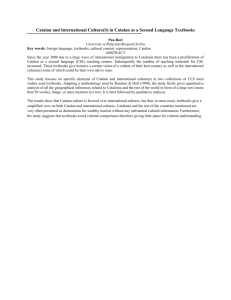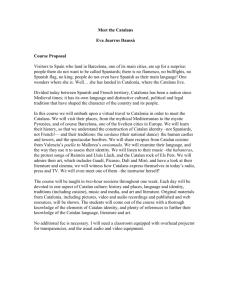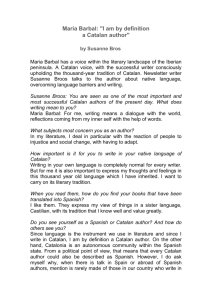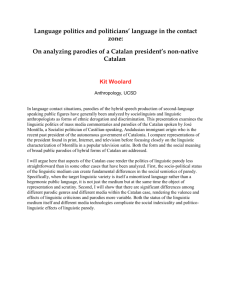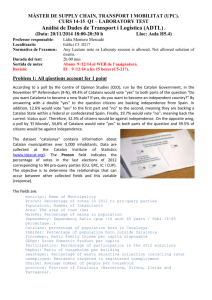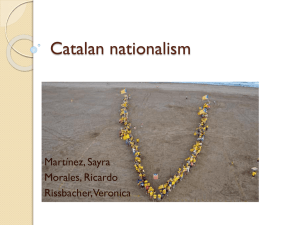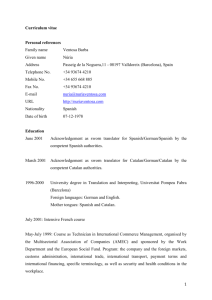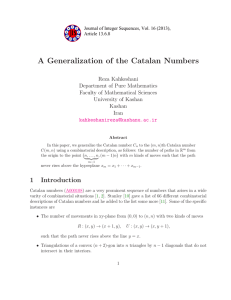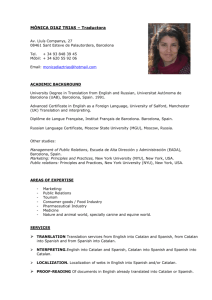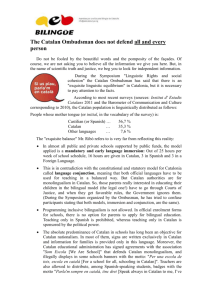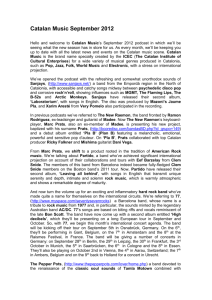Document
advertisement
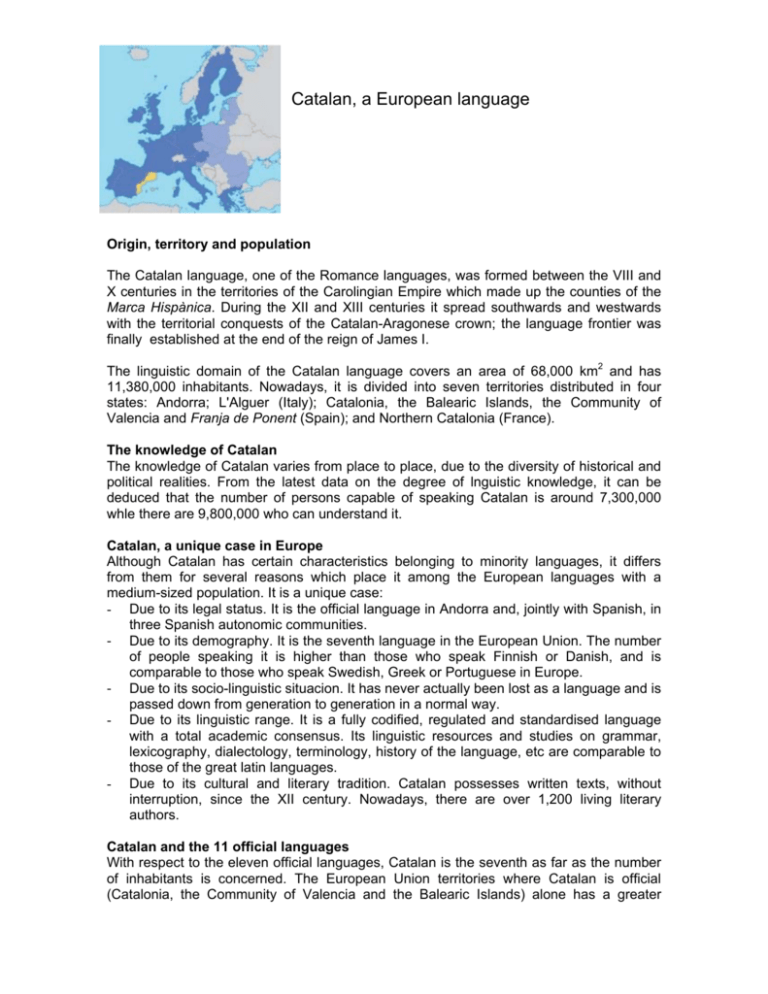
Catalan, a European language Origin, territory and population The Catalan language, one of the Romance languages, was formed between the VIII and X centuries in the territories of the Carolingian Empire which made up the counties of the Marca Hispànica. During the XII and XIII centuries it spread southwards and westwards with the territorial conquests of the Catalan-Aragonese crown; the language frontier was finally established at the end of the reign of James I. The linguistic domain of the Catalan language covers an area of 68,000 km2 and has 11,380,000 inhabitants. Nowadays, it is divided into seven territories distributed in four states: Andorra; L'Alguer (Italy); Catalonia, the Balearic Islands, the Community of Valencia and Franja de Ponent (Spain); and Northern Catalonia (France). The knowledge of Catalan The knowledge of Catalan varies from place to place, due to the diversity of historical and political realities. From the latest data on the degree of lnguistic knowledge, it can be deduced that the number of persons capable of speaking Catalan is around 7,300,000 whle there are 9,800,000 who can understand it. Catalan, a unique case in Europe Although Catalan has certain characteristics belonging to minority languages, it differs from them for several reasons which place it among the European languages with a medium-sized population. It is a unique case: - Due to its legal status. It is the official language in Andorra and, jointly with Spanish, in three Spanish autonomic communities. - Due to its demography. It is the seventh language in the European Union. The number of people speaking it is higher than those who speak Finnish or Danish, and is comparable to those who speak Swedish, Greek or Portuguese in Europe. - Due to its socio-linguistic situacion. It has never actually been lost as a language and is passed down from generation to generation in a normal way. - Due to its linguistic range. It is a fully codified, regulated and standardised language with a total academic consensus. Its linguistic resources and studies on grammar, lexicography, dialectology, terminology, history of the language, etc are comparable to those of the great latin languages. - Due to its cultural and literary tradition. Catalan possesses written texts, without interruption, since the XII century. Nowadays, there are over 1,200 living literary authors. Catalan and the 11 official languages With respect to the eleven official languages, Catalan is the seventh as far as the number of inhabitants is concerned. The European Union territories where Catalan is official (Catalonia, the Community of Valencia and the Balearic Islands) alone has a greater population than the territories where Greek, Portuguese, Swedish, Danish and Finnish are official. (see map p. 19) Catalan and the official languages of the 12 candidates With respect to the twelve states that will be incorporated in the Union in the coming years, Catalan is the third language as far as the population is concerned. It is only outnumbered by Polish (38.7M) and Rumanian (22.5M). (see map p. 21) Catalan and the so-called “minority” languages In the European territory of the fifteen members, according to the Euromosaic report, there are thirty-six regional or minority languages, spoken by over 20,000,000 persons. Of these 36 languages, only 6 have over a million speakers. Catalan is the most numerous language, as far as the number of speakers is concerned, and is the only one to be spoken by more than 7 million persons. Generally, Catalan is included in this group of languages even though its reality is far from that of all the others due to its demography, legal statutes, socio-linguistic situation and consolidation of linguistic norms. [map] European languages which have more than 125,000 speakers

